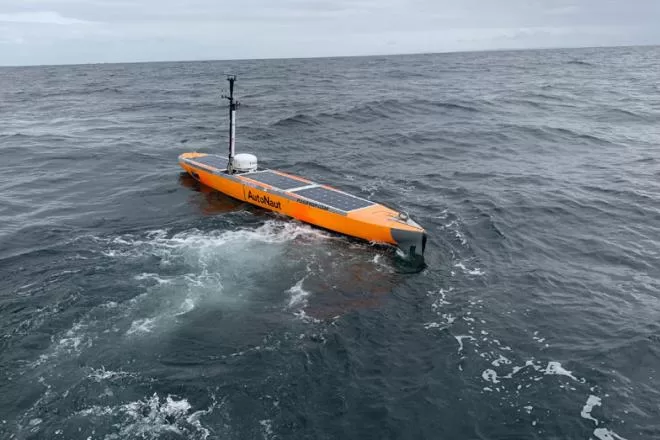A wave-propelled uncrewed surface vessel (USV) has successfully recovered scientific data from a sensor moored 1,800m deep in the Rockall Trough, northwest of Scotland and Ireland.
It is believed to be the first time there has been through-water communications of ocean climate research data to an autonomous vehicle, and instant transmission of data to shore.
The USV, deployed by the Scottish Association for Marine Science (SAMS) and manufactured by AutoNaut in the UK, remotely collected data from the Sonardyne Fetch AZA bottom pressure recorders (BPRs), before sending it back to oceanographers on shore via satellite.
“This is an incredible achievement by the team at SAMS and our partners at AutoNaut and Sonardyne,” said Prof Mark Inall, an oceanographer at SAMS.
“It has never been more important to have accurate and up-to-date measurements about what is happening in our ocean, which is undergoing major and rapid changes in the face of climate change.”
Reliable data
He added: “While traditional ship-based observations provide the most reliable data, such scientific cruises take some time to organise, are expensive and produce a large carbon footprint.
“This Autonaut mission feels like a major milestone for oceanography as it opens up a new way of collecting more data, more regularly, which is key to improving climate predictions and helping us to prepare for what the future may hold.”
Last year SAMS deployed two BPRs on the seabed of the Atlantic Ocean: in the Rockall Trough, and in the Labrador Sea, east of Canada.
Based on the weight of the water above it, the instrument can detect a change in pressure that is the equivalent to a sea-surface height change of one centimetre.
By comparing the sea surface height on the western and eastern flanks of the Atlantic Ocean, oceanographers can calculate the speed and strength of vast ocean currents that dictate much of Earth’s climate.
As the BPRs will remain on the seabed for up to ten years, the previously held expectation was that ship-based cruises would be the only way to remotely retrieve their data.




